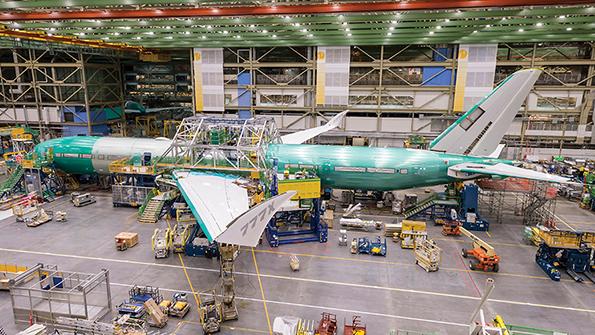Opinion: Suppliers Are Key To Aviation’s COVID Recovery

The COVID-19 pandemic has had a damaging effect on commercial aviation and in turn on the aircraft manufacturers, their supply chain partners and the maintenance, repair and overhaul providers.
By some accounts, commercial air travel is off by 90% globally from a year ago and not expected to return to prepandemic levels for possibly three years. Domestic travel is likely to return relatively faster than international travel, and business travel will likely return before leisure travel rebounds. Airlines have realized reduced revenue, cash flow declines and significant liquidity concerns. In reaction to these, the airlines have removed more than 30% of their capacity, announced the retirement of many older, less efficient aircraft from their fleets, delayed aircraft deliveries and canceled pending orders of new aircraft.
With the delays and cancellations of new aircraft orders, the aircraft OEMs have slowed and in some cases suspended production, resulting in a cascading effect through the supply chain. These production volume reductions have reduced demand and stressed nearly all levels of the industry. This has been further complicated by the need to create and sustain safe and healthy production facilities, which has reduced productivity in the short term as the facilities are realigned to meet the challenge.
It is expected that some of the lower-tier providers will not survive the near term, creating significant stress on the overall global supply chain for aircraft manufacturers. With the reduction in capacity (fewer flight hours) and the retirement of older aircraft, maintenance, repair and overhaul (MRO) providers could be in for a rough ride over the next several years. Demand for MRO services could decline 30%, mirroring the reduction in capacity. We should expect to see consolidation over the next several years as the market adjusts the supply side to meet the diminished demand.
The commercial aviation market is expected to continue to suffer this decrease in demand until the flying public (business and leisure) feels safe traveling once again. This will likely require a multifaceted approach, which would include changes to passenger processes at airports, aircraft seating, passenger behavior and filtration and circulation of air in the cabin. Passengers must feel confident about their well-being before they will begin traveling in large numbers. Demand is expected to increase significantly once a vaccine is widely available for all those involved in the travel experience.
Until that time, we could see airline failures, restructuring and consolidation. This seems a particular challenge for airlines that rely on long-haul international leisure travel. The aviation supply chain could lose key capability and capacity as the production reductions and productivity limitations stress cash flow and liquidity.
It should be noted that before the pandemic, the orderbooks for larger aircraft manufacturers were as robust as they have ever been. These orderbooks were larger than the current capacity to deliver. So we should take solace in the notion that while painful, the current situation is due to the nature of the demand reductions and the impact of the delivery delays and cancelations. When the flying public returns, deliveries will again be made, and production will begin to ramp up.
Despite the decline in new orders during the pandemic, the orderbooks will still be robust, and the OEMs will have significant work. Prepandemic, there were orders for about 14,300 aircraft, and that now stands at about 14,100, which represents 11 years of production at prepandemic production rates. As the manufacturing facilities adapt for health and safety purposes, productivity will return.
To recover and thrive, aviation leaders should continue to embrace digital transformations that can keep their employees connected to productive work, provide multifaceted visibility into the supply chain to better sense the rapid onset of supply disruption and further transform their facilities into smart factories.
In the very near term, successful leaders should keep close to their key customers and suppliers, understand their challenges and support them however they can. Sustaining the entire aviation value chain is key to recovering and thriving in a post-pandemic aviation market.
Robin Lineberger is the U.S. and global aerospace and defense leader at Deloitte LLP.
The views expressed are not necessarily those of Aviation Week.




